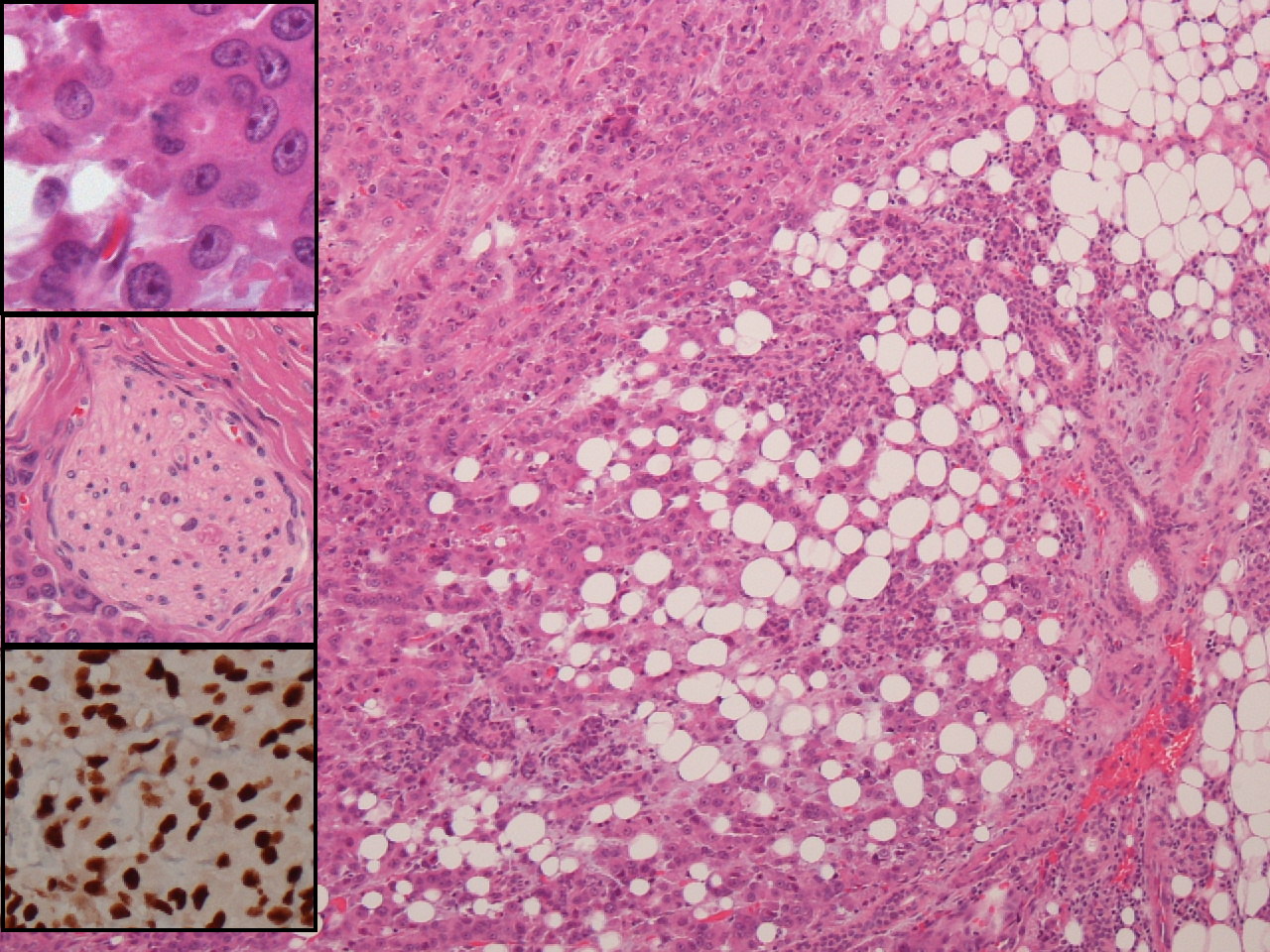Case History
A 61-year-old man with a 6-month history of right parotid mass and lymphadenopathy.
- High-grade salivary duct carcinoma
- Oncocytic mucoepidermoid carcinoma
- Poorly differentiated squamous carcinoma
- Mammary analogue secretory carcinoma

Answer: A, High-grade salivary duct carcinoma
The section shows a high-grade carcinoma. There is marked nuclear atypia and a high mitotic rate. The cytoplasm is relatively abundant and eosinophilic. Some sections show necrosis. No definitive gland formation is present nor is there any keratinization. Immunostains are negative for p40, S-100 and mammaglobin. An immunostain for androgen receptor is positive. The morphology is somewhat non-specific but along with the immunostain results the diagnosis is high grade salivary duct carcinoma. This tumor typically presents in the parotid gland of elderly men and can arise de novo or as carcinoma ex pleomorphic adenoma. The tumors resemble carcinomas of the breast and can have areas of cribriform growth and areas resembling comedo type necrosis. Additional variants include mucin rich, micropapillary, sarcomatoid and oncocytic tumors. Squamous metaplasia can be seen in some cases. The differential diagnosis includes high grade mucoepidermoid carcinoma, squamous carcinoma, acinic cell carcinoma and low grade salivary duct carcinoma(cribriform cyst adenocarcinoma. Perineural and vascular invasion are common. In analogy to breast carcinoma, proposed molecular classification includes luminal (androgen receptor +), Her2+ and basal like. The clinical significance of this classification is still uncertain.
References:
Udager AM, Chiosea SI. "Salivary Duct Carcinoma: An Update on Morphologic Mimics and Diagnostic Use of Androgen Receptor Immunohistochemistry." Head Neck Pathol. 2017 Sep;11(3):288-294.
Butler RT, Spector ME, Thomas D, McDaniel AS, McHugh JB. "An immunohistochemical panel for reliable differentiation of salivary duct carcinoma and mucoepidermoid carcinoma." Head Neck Pathol. 2014 Jun;8(2):133-40.
Simpson RH. "Salivary duct carcinoma: new developments--morphological variants including pure in situ high grade lesions; proposed molecular classification." Head Neck Pathol. 2013 Jul;7 Suppl 1:S48-58
Case contributed by: Thomas Winokur, M.D., Professor, Anatomic Pathology